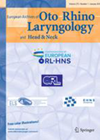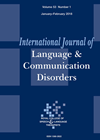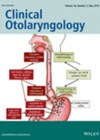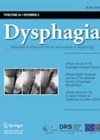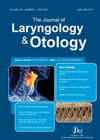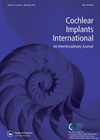
Journal Reviews
Traditional incision and drainage of a quinsy may be more efficacious than aspiration
Peritonsillar abscess drainage has always been one of the first procedures an ENT junior doctor performs. Traditionally incision and drainage (I&D) was the mainstay of treatment. In recent years, needle aspiration of the abscess has become much more commonplace, perhaps...
What the people want and need: emerging service for communication needs in Ghana
There is a significant shortfall in rehabilitation service for people with communication difficulties across Majority World countries. It is known that many people in these countries are likely to seek help from a variety of sectors including western healthcare, religious...
Doing it for the men: diversifying the speech and language therapy profession
It is known that many health professions are dominated by females, particularly the allied health professions, such as speech and language therapy. This is more pronounced in the US than in the UK, Australia and other countries. The authors of...
Surgical management of refractory osteoradionecrosis
This is a French single-centre, 10-year experience of 55 surgical resection and reconstruction procedures. They claim an overall effectiveness rate of 92.3%. A total of 36 segmental and 19 marginal mandibulectomies were performed. A variety of free flaps were used,...
Humour to improve clinician - patient interactions
This study examined the role of humour employed by the speech language graduate student during their one-on-one therapy sessions with people with aphasia (PWA). The students used humour to soften the errors made by the clients; to equalise interactional power;...
Are elective neck dissections needed during salvage laryngectomy?
There has recently been a move away from elective neck dissections in the setting of salvage laryngectomy. This has mainly resulted from an appreciation of the increase in morbidity, in particular pharyngocutaneous fistula formation, and an improvement in cross-sectional imaging...
Do it like a techy: telepractice in SLT for people with Parkinson’s disease
Parkinson’s disease (PD) is the second most common neurological condition in Australia, and communication difficulties are reported by 90% of people with the condition. Unfortunately, not all people with PD have access to speech and language therapy services due to...
Gastro-oesophageal reflux and cricopharyngeal dysfunction – how do they link?
It has been hypothesised that cricopharyngeal muscle hypertrophy develops as a response to chronic gastro-oesophageal reflux disease. The cricopharyngeus muscle is an important component and contributor to the upper oesophageal sphincter that creates a barrier between the pharynx and oesophagus....
Socially appropriate part II: therapy for people with TBI
Social communication is a complex behaviour comprising social and cognitive communication skills. Providing speech and language therapy (SLT) interventions for people with social communication difficulties following traumatic brain injury (TBI) requires the clinician to understand how ingredients from an evidence-based...
Death related to epistaxis
One of the commonest emergencies presenting in ENT is epistaxis. The presentation can be through accident and emergency or through ward referrals. In this national audit of epistaxis management involving 113 centres, it was noted that 33 of the 985...
The power of (younger versus older) lips
The Directional into Velocity of Articulators (DIVA) model theorises that we require both auditory and sensory feedback - from our articulators - in order to ensure we are able to produce precise and powerful articulatory movements. This study aimed to...
The paediatric dilemma of one ear in and one ear out of NICE criteria
The auditory implant team in Manchester have implanted a cohort of children where audiological thresholds meet the NICE guidance for cochlear implantation (CI) in one ear only, and the other falls into moderate, severe or sloping loss. These children are...

